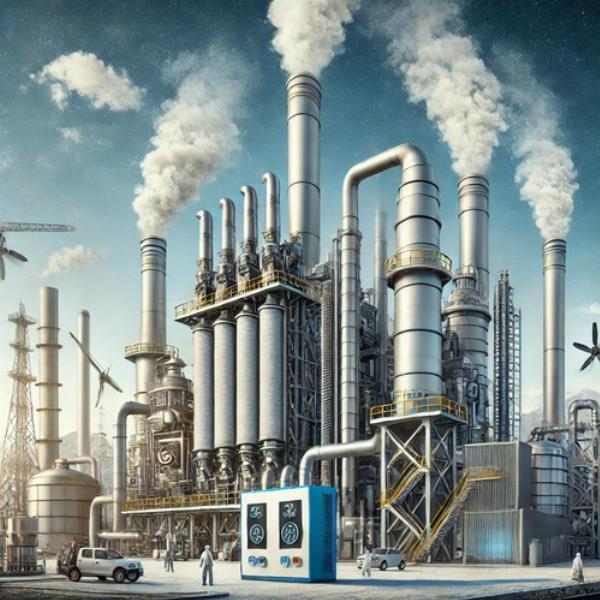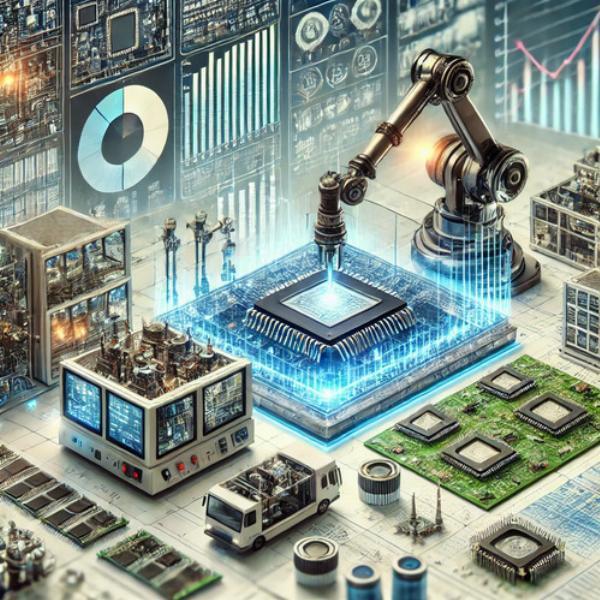Air Pollution Control Market Soars Amid Rising Concerns

Strong 8k brings an ultra-HD IPTV experience to your living room and your pocket.
Introduction
The Air Pollution Control Market has surged in response to the rising concerns about deteriorating air quality. Stringent government regulations, growing public awareness about the harmful effects of pollution and technological advancements have collectively propelled the market to new heights. From industrial manufacturing to urban air quality management, the need for effective air pollution control systems has never been greater.
Driving Forces Behind Market Growth
1. Stricter Environmental Regulations
Governments across the globe are enforcing stringent laws to curb air pollution. Regulatory bodies, such as the U.S. Environmental Protection Agency (EPA) and the European Environment Agency (EEA), have established rigorous emission standards. Industries in sectors like energy, manufacturing and transportation are being mandated to adopt air pollution control technologies, such as scrubbers, catalytic converters and filters, to comply with these regulations.
2. Increased Public Awareness and Health Concerns
Rising public awareness about the adverse health effects of air pollution is a major driver of the market. According to the World Health Organization (WHO), air pollution is linked to millions of deaths each year, due to its contribution to respiratory and cardiovascular diseases. This growing awareness has put pressure on both governments and industries to implement effective air quality control measures to protect public health.
3. Technological Advancements
Innovation in air pollution control technologies has significantly enhanced the efficiency and cost-effectiveness of these systems. The introduction of smart pollution control systems, which leverage artificial intelligence (AI) and the Internet of Things (IoT), allows for real-time monitoring and optimization of air quality. These technological advancements enable industries to not only meet regulatory requirements but also optimize their operations by reducing energy consumption and maintenance costs.
Key Market Segments
1. Power Generation
Power plants, particularly those using fossil fuels, are significant contributors to air pollution. Technologies like flue gas desulfurization (FGD) systems, electrostatic precipitators (ESP) and selective catalytic reduction (SCR) systems are widely used to remove pollutants such as sulfur dioxide (SO₂), nitrogen oxides (NOₓ) and particulate matter from emissions.
2. Manufacturing and Industrial
Manufacturing plants across various sectors, including cement, chemicals, and steel production, rely heavily on air pollution control systems to reduce VOCs (volatile organic compounds), particulate matter and hazardous air pollutants (HAPs). Dust collectors, thermal oxidizers, and baghouses are commonly used solutions to meet stringent emission standards.
3. Automotive
The automotive industry plays a crucial role in the air pollution control market, as vehicles are a significant source of air pollutants like NOₓ and carbon monoxide (CO). Catalytic converters and diesel particulate filters (DPF) have become standard components in vehicles to minimize harmful emissions.
Regional Market Insights
1. Asia-Pacific: A Major Market Driver
The Asia-Pacific region, particularly China and India, has seen rapid industrialization and urbanization, leading to severe air pollution problems. Governments in these countries have ramped up efforts to combat pollution through stricter environmental laws and heavy investments in pollution control technologies. As a result, the region is expected to remain the largest and fastest-growing market for air pollution control solutions.
2. North America and Europe: Mature Markets with Upgrading Systems
North America and Europe are mature markets that have long established regulatory frameworks to control air pollution. The focus in these regions is on upgrading existing systems with more efficient and sustainable technologies. Countries in these regions are also emphasizing renewable energy sources, which may alter the landscape of the air pollution control market in the long run.
Challenges Facing the Market
1. High Installation and Maintenance Costs
One of the major challenges in the air pollution control market is the high capital investment required for the installation and maintenance of advanced systems. Small and medium-sized enterprises (SMEs) often struggle with the costs associated with adopting these technologies, despite regulatory pressures.
2. Emerging Economies and Lack of Infrastructure
In some developing regions, the lack of infrastructure and funding for large-scale pollution control systems presents a hurdle to market expansion. While governments in these areas are becoming more aware of the need for such technologies, economic constraints often delay their adoption.
Future Outlook: Sustainability and Innovation
As the global focus on sustainability continues to rise, the air pollution control market is poised for further growth. Companies are increasingly investing in research and development to create more efficient, environmentally friendly technologies, including the use of renewable energy for pollution control operations. The integration of AI and IoT in pollution control systems will likely lead to further advancements, allowing for smarter, data-driven decision-making.
In addition, governments around the world are likely to continue tightening regulations to meet international climate agreements, driving demand for more comprehensive pollution control solutions.
Conclusion
The air pollution control market is on an upward trajectory as industries, governments and the public recognize the urgent need to mitigate the impact of air pollution. Technological advancements, coupled with stricter environmental regulations and growing health concerns, are fueling the demand for air pollution control systems. With continuous innovation and a global shift toward sustainability, this market will play a pivotal role in shaping the future of cleaner, healthier air.
Elaborate More Reports:
Food Tray Sealer Market Overview
Turbo Expander Market Overview
Scraped Surface Heat Exchangers Market Overview
Hot Runner Controller Market Overview
Rupture Disc Market Overview
3D Scanner Market Overview
Glass Lined Reactor Market Overview
Floating Dock Market Overview
Wire Wedge Bonder Equipment Market Overview
Note: IndiBlogHub features both user-submitted and editorial content. We do not verify third-party contributions. Read our Disclaimer and Privacy Policyfor details.






